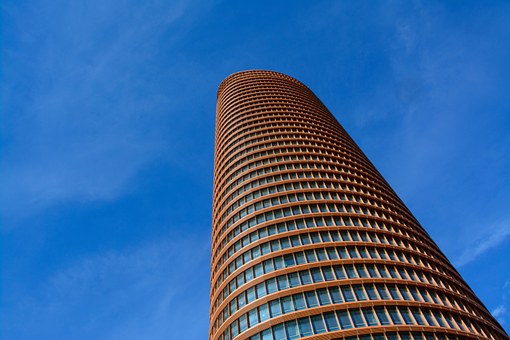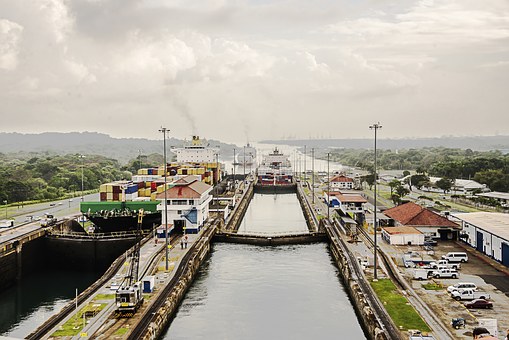Written by: Patrick Hennessey
With every improvement to transportation, the world feels a little smaller, and people become more connected. Some of the world’s greatest inventions have been in the field of transportation, but we haven’t had a major innovation in over a century- a new system is long overdue. This article will explore the current state of hyperloop technology, including how it works, why it matters, and its role in the evolution of transportation. What is this mysterious mode of transportation, and does it live up to all the hype?
The Value of Transportation Innovation
Few innovations have the potential to revolutionize how society operates and create entirely new industries and economies. Innovation in transportation is pivotal for our society because improving the way people travel is empirical for innovation in other fields. A common example of this is the car, which sparked massive growth in other sectors such as the restaurant and oil industries. This concept, the idea that truly game changing inventions make “a whole other set of new ideas imaginable for the first time,” is why nearly half of the top 20 inventions of all time are related to transportation [1]. According to experts at Big Think, the wheel, compass, steam engine, combustion engine, car, airplane, and rocket all make the top 20 list, highlighting the enormous potential impact that transportation innovation can have on the world [2]. Will hyperloop be the next transportation innovation to make the list?
Hyperloop Technology: Magnets, Tubes, and Pods
Hyperloop is a developing form of ground transportation that carries passengers or cargo through low pressure tubes in levitating pods. In this system, pods have the potential to reach speeds of over 750mph, which is more than double the top speed of fastest train in the world [3]. The idea for this technology was first proposed by Elon Musk in his open source paper “Hyperloop Alpha” in 2013. Since then, many private companies have emerged to make this dream a reality. The concept may initially sound like magic, but the core technology is much simpler than one would think. Let’s start with levitation, because this isn’t Hogwarts- this is science.
Magnets, not magic, are the sole source of power for hyperloop. Using magnets for levitation and power is not uncommon, and many train systems today, including the fastest train in the world, rely on magnets to float slightly above the train tracks. This concept, known as magnetic levitation, or Maglev, can be demonstrated with a pencil and a few magnets (Fig. 1). The magnets on the ground are oriented such that they repel the magnets on the pencil, and when these opposing forces match, the pencil hovers slightly above the ground. Although this becomes slightly more complex when working with larger systems, most companies implementing hyperloop technology plan to use a form of this physical phenomenon to lift their pods above the track. Using magnetic levitation greatly reduces the friction involved throughout the entire transportation process, making travel faster and more energy efficient compared to other forms of ground transportation.
Fig. 1: If you’ve ever tried to push two magnets together and felt them push each other apart, you’ve experienced what’s responsible for the levitation of Maglev trains, and soon, the levitation of hyperloop pods [4].
Magnets are also used to power and propel Maglev trains and hyperloop pods. This propulsion system works because of changing magnetic poles along the track, which operate such that the train or pod is constantly being attracted to the magnets in front of it and repelled by the magnets behind it (Fig. 2). This method of power production requires fewer moving parts than other forms of ground transportation because magnetic forces can be created using only electrical currents, whereas most systems require complicated combustion engines and brakes. As various trains have already proven, this technology leads to many benefits, such as smoother deceleration. Trains no longer need to generate friction to slow themselves down, so instead of screeching to a stop because of inconsistently applied friction, trains decelerate by flipping the direction of the track’s magnetic forces, allowing for a smooth and silent transition.
Fig. 2: By changing the polarity of magnets on the side of the track, and doing so with perfect timing, trains and hyperloop pods can be propelled or slowed seamlessly with very little friction [5].
Hyperloop may only seem like a fancy Maglev train, but the core difference is hyperloop’s system of tubes. In order to reduce friction even more than traditional trains, hyperloop pods will be transported through tubes that have almost all the air pumped out of them. The process of pumping out air is fairly simple; it utilizes the same technology that pumps water from low to high ground. Air pumps will run periodically to keep the pressure in the tubes near a specified level: not quite a perfect vacuum, but fairly close to one. Hyperloop plans to use these low pressure tubes for the same reason that commercial airplanes fly at such high altitudes — the air is much thinner and less dense. This process reduces the “drag force of the air by 1,000 times relative to sea level conditions,” giving hyperloop a major advantage over ground transportation alternatives, as drag forces are the largest opposing force at high speeds [6]. In combination with magnetic levitation and propulsion, the tube system creates the perfect environment for nearly frictionless travel.
Despite the aforementioned benefits, many people may still be wary of traveling in pods. Although the concept may sound scary, travel in these pods will be incredibly luxurious. The process can be compared to air travel without any noise, turbulence, or bumps during take-off and landing. Hyperloop will feel motionless after pods are up-to-speed, and because there is little to no resistance at any point in the entire experience, there will be no shaking and virtually no noise, even at the beginning and end of a journey. Virgin Hyperloop One (VHO) is the current leader in the race to build hyperloop technology, and they boast luxurious and futuristic pods that look like they’re out of a sci-fi movie (Fig. 3). VHO is the only company in the world that has built a full-scale hyperloop system, and their pods provide many benefits over current transportation options. For example, VHO’s pods are a lot smaller than trains, and thus much easier to maneuver. This means that pods can leave the origin station every 30 seconds, much faster than any current train system [6]. Although each pod carries fewer people than a train, the system as a whole will transport more people on any given route because pods will leave more often. Pairing all of these technologies together creates the hyperloop system. Sure, this seems promising, but why has it garnered so much attention?
Fig. 3: Virgin Hyperloop One’s prototype pod, created in partnership with the Dubai Roads and Transport Authority (RTA), will likely be used in the world’s first functioning hyperloop system. [7]
Hyperloop’s Societal, Environmental, and Individual Benefits
Hyperloop is poised to revolutionize transportation by providing enormous societal benefits. Primarily, you no longer have to live where you work. This incredible result could allow us to redefine what cities look like. Perhaps what is in store in our future is an infinite suburb, with more fluid boundaries between people and places. Alan M. Berger, a Professor of Advanced Urbanism at MIT, believes that transportation by hyperloop will redefine what a city is “in the extended regional context of [one’s ability to commute] extra long distances in short times” [11]. If Professor Berger is correct, hyperloop will connect people and places in a fundamentally new way, an unprecedented feat in the history of transportation.
In addition to these larger societal benefits, hyperloop has the opportunity to have a massive environmental impact. Compared to all current transportation systems, hyperloop is projected to last longer, create fewer carbon emissions, and reduce noise pollution. Because of the virtually frictionless environment, hyperloop hardware undergoes less stress over time, resulting in improved longevity of the system and lower maintenance costs [6]. Additionally, because the whole system runs on electricity, it could have zero carbon emissions if combined with solar power. Even if sustainable energy sources are not immediately feasible to use, the system uses so little energy that it will still be more efficient than any other form of transportation. Lastly, because hyperloop pods are contained within the tube system, they will be nearly silent to the surrounding community, improving the lives of humans and animals along the route. In addition to societal and environmental benefits, the personal benefits of hyperloop are expected to be profound.
Hyperloop is poised to revolutionize the convenience of transportation, boasting numerous advantages to individuals. The first of these individual benefits is pure speed. The drive from LA to SF is almost 7 hours; imagine being able to get there in 43 minutes. This what Virgin Hyperloop One promises, and is just one of thousands of potential routes. Feeling a night out in Vegas? You could get there in there in 30 minutes via hyperloop, less than the average commute to work in some US cities [8]. Commute time has a massive impact on personal stress levels, and a decrease in commute time could save a lot of headaches. Additionally, hyperloop could prove to be much safer than cars or trains due to the removal of human operators. The system will be fully automated, removing the possibility for human error, which is the cause of almost all transportation accidents today. Furthermore, the magnets in the system will be so strong that derailing a pod should be nearly impossible, and weather is likely to have no effect on the system [9]. The tubes are expected to be built to withstand earthquakes, tube depressurization, and power outages, which would result in an incredibly safe travel experience. Lastly, the price to ride hyperloop is estimated to be only $20 for a one-way trip from LA to SF [9]. The reason hyperloop might be so cheap is that the energy costs to operate the system are so low. Less friction means less energy needed, which results in a lower cost per passenger per journey. If VHO can meet these price expectations, a trip from LA to SF will be a fifth of the cost of a ticket on the the California High Speed Rail, a $77 billion project that is currently underway to connect LA and SF, not to mention being 4-times slower than hyperloop [10].
The Future of Hyperloop
Although hyperloop is incredibly promising, it is still a few years away from being technologically viable. The top speed of the fastest hyperloop pod is currently only half of what estimates claim it can reach, and a lot of progress still needs to be made before the system can fulfill all expectations. The earliest hyperloop is likely to become available is 2021, and only in select areas. At first, hyperloop will focus on city-to-city transportation, but within the next decade, many proponents believe that hyperloop will be used in combination with concurrent innovations to redefine modern transportation.
Despite these potential benefits, many still doubt the feasibility of the hyperloop system. This backlash is almost predictable given the responses to previous transportation innovations, such as the plane. There was a time when everyone thought hurtling through the sky at 30,000 feet was crazy, yet nowadays, there are roughly 40 million flights a year [12]. We might just be in the same position with hyperloop as we were with planes, because hyperloop is not as far-fetched as many believe. We have already taken massive strides in the development of Maglev technology with trains, and the fact that we are halfway to hyperloop’s expected speed is promising. As the world’s population increases at record rates, there is growing interest in finding better solutions to transportation problems. Hyperloop might just be the transportation innovation that society desperately needs.
References
[1] M. Gambino. (2014, September 14). The World Is What It Is Today Because of These Six Innovations [Online]. Available: https://www.smithsonianmag.com/
[2] P. Ratner. (2017, September). Top 20 greatest inventions of all time [Online]. Available: https://bigthink.com/
[3] B. Hesse. (2015, August 13). Everything you need to know about Japan’s L0 Series maglev: the fastest train in the world [Online]. Available: https://www.digitaltrends.com/
[4] DDelectroTech.com. (2017, July 23). How to Make Floating Pencil at Home using Magnets & Cardboard [Online]. Available: https://www.youtube.com/
[5] C. Jeon. (2011, February). Physics of Maglev Train [Online]. Available: http://ffden-2.phys.uaf.edu/212_spring2011.web.dir/Chan_Jeon/physics-of-maglve-train.html
[6] S. Ranger. (2018, March 15). What is Hyperloop? Everything you need to know about the race for super-fast travel [Online]. Available: https://www.zdnet.com
[7] Multiple Authors. (2018, August 7). Virgin Hyperloop One: Our Story [Online]. Available: https://hyperloop-one.com/our-story
[8] R. Half. (2017, October 23). Ahead Of Halloween, Robert Half Reveals U.S. Cities With Spookiest And Most Stressful Commutes [Online]. Available: https://www.prnewswire.com/
[9] E. Musk, Hyperloop Alpha. Hawthorne, CA: SpaceX, 2013.
[10] R. Vartabedian. (2018, July 29). Calculations show bullet train can complete route within 2 hours and 40 minutes. Reality may prove slower [Online]. Available: http://www.latimes.com/
[11] A. Berger, J. Kotkin. (2017, May 18). Preparing For The Infinite Suburb [Online]. Available: https://hyperloop-one.com/
[12] Statista. (2018, June). Number of flights performed by the global airline industry from 2004 to 2018 (in millions) [Online]. Available: https://www.statista.com/




